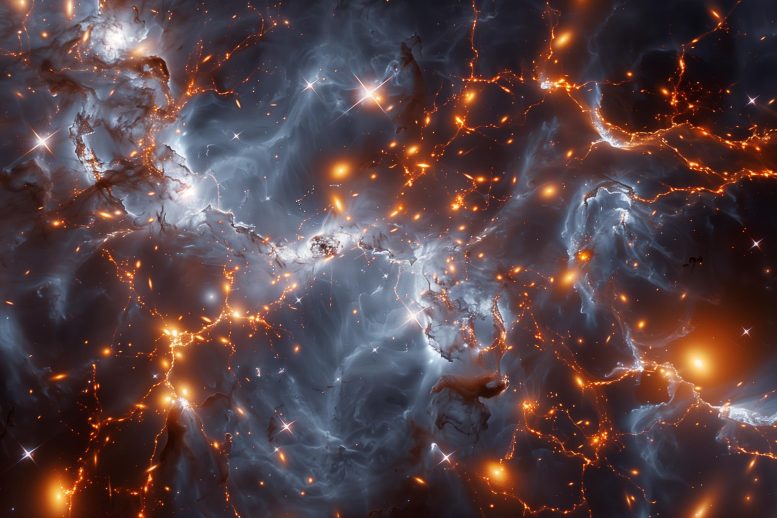
By Science China Press December 8, 2024
Collected at: https://scitechdaily.com/rewriting-cosmic-history-desis-new-map-challenges-traditional-dark-energy-views/
Research using DESI data reveals dark energy’s dynamic nature, supporting the quintom-B model and suggesting a non-static cosmological constant.
A research team led by Professor Yi-Fu Cai from the Department of Astronomy at the University of Science and Technology of China utilized the latest baryon acoustic oscillation (BAO) data from the Dark Energy Spectrometer (DESI), along with previous observational data, to reconstruct the background evolution of the universe within the framework of dynamic dark energy using the Gaussian reconstruction method. The reconstructed dark energy equation-of-state parameter exhibits the dynamic behavior of quintom-B, which can be realized by modified gravity theory.
Recently published in the journal Science Bulletin, this study significantly enhances our understanding of the universe’s accelerated expansion in its later stages.

Historical Context and DESI’s Role
In 1998, observations of distant Type Ia supernovae revealed the existence of dark energy that drove the universe’s accelerating expansion, putting together the final piece of the puzzle of the current standard Model of cosmology. In the standard Model of cosmology, visible matter accounts for only 5% of the universe’s total energy; dark matter accounts for 27%, while the remaining 68% is dark energy. The physical nature and dynamic characteristics of dark energy are one of the major puzzles in physics and the main scientific objectives of the Dark Energy Spectrometer project.

Advances in Dark Energy Understanding
In April 2024, the Dark Energy Spectrometer team released the results of its first year of observations, creating the largest three-dimensional map of the universe with the most accurate measurements to date, measuring the late expansion history of the universe with an accuracy of more than 1%, giving us the best way to study the evolution of the universe. At the same time, the observational results show that dark energy, which dominates the late acceleration of the universe, may not be a cosmological constant in the traditional sense but may have a dynamic evolutionary feature.

Theoretical Implications and Future Directions
Based on the latest DESI observation data, this study reconstructed the evolution of the equation-of-state parameter of dark energy over time by using the Gaussian process method and compared it with some widely studied modified gravity models. The analysis in this study shows that the reconstructed equation-of-state parameter supported the quintom dark energy model proposed by Zhang Xinmin’s research team in 2004, in practically “Quintom-B.” As the universe expands, the dark energy equation-of-state parameter will cross -1 from phantom to quintessence regime.
To further discuss how this dynamic feature can be interpreted through theories, this study especially considers three different modified gravity theories as specific examples, namely f(R), f(T), and f(Q) gravity theories, and reconstructs the gravitational action. The result shows that certain modified gravity can exhibit the quintom dynamics and fit the recent DESI data efficiently, and for all cases, the quadratic deviation from the LCDM scenario is mildly favored.
Although what dark energy corresponds to is still a mystery to us, the latest DESI data suggest that it may not be a cosmological constant in the traditional sense. Therefore, it is very important to study the dynamic characteristics of dark energy from a phenomenological or theoretical point of view. It is hoped that this study will play a role in attracting more and more young people to participate in the study of this basic problem in the future.
Reference: “Quintom cosmology and modified gravity after DESI 2024” by Yuhang Yang, Xin Ren, Qingqing Wang, Zhiyu Lu, Dongdong Zhang, Yi-Fu Cai and Emmanuel N. Saridakis, 17 July 2024, Science Bulletin.
DOI: 10.1016/j.scib.2024.07.029

Leave a Reply